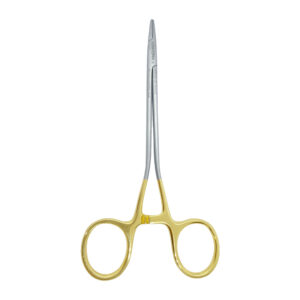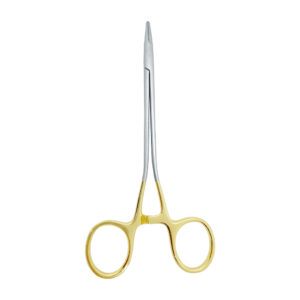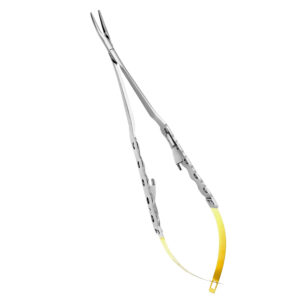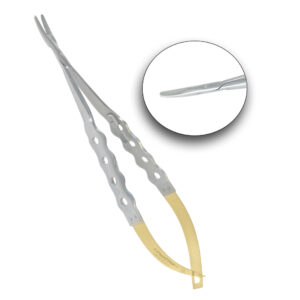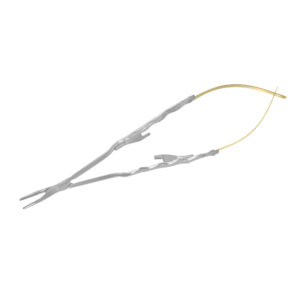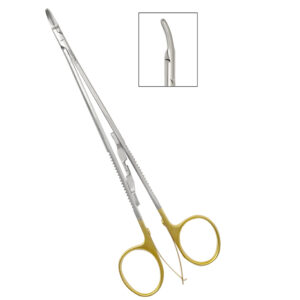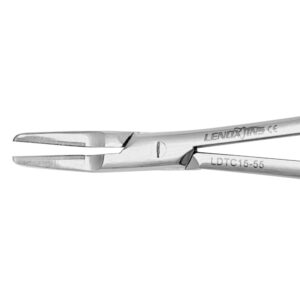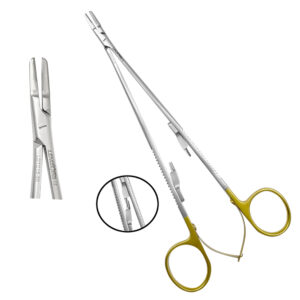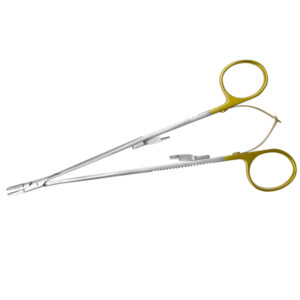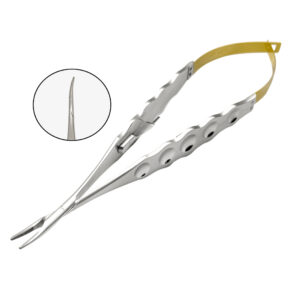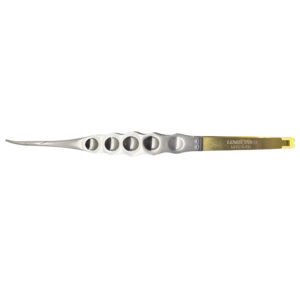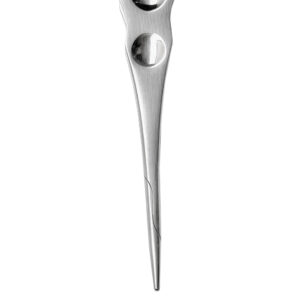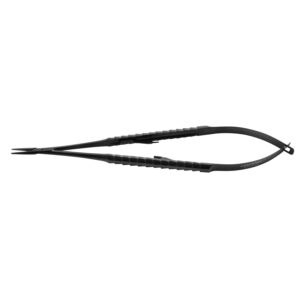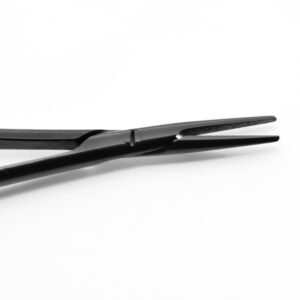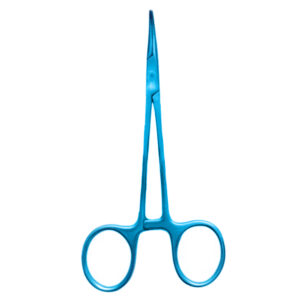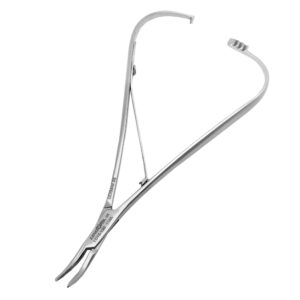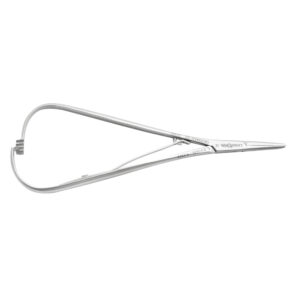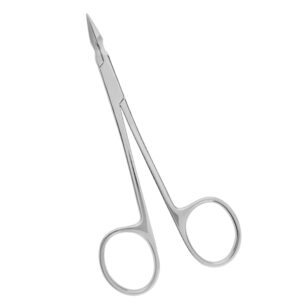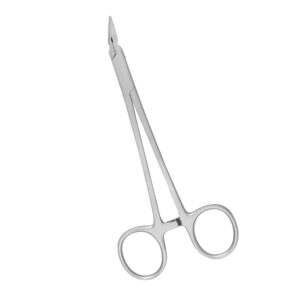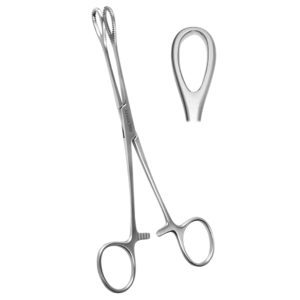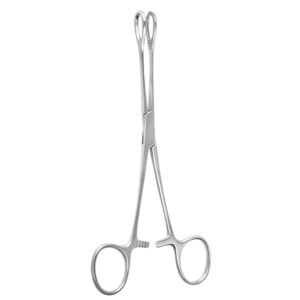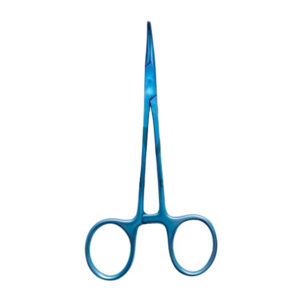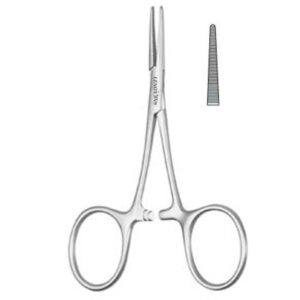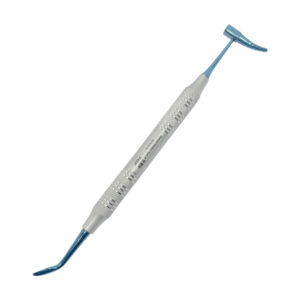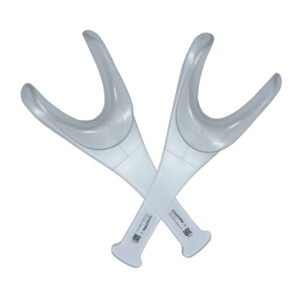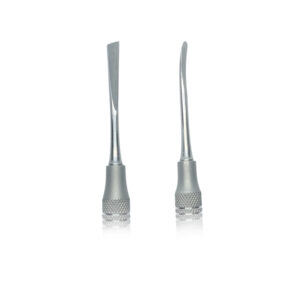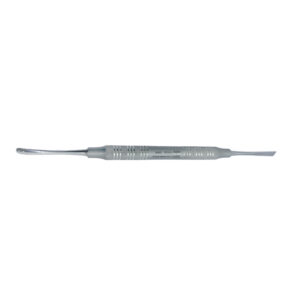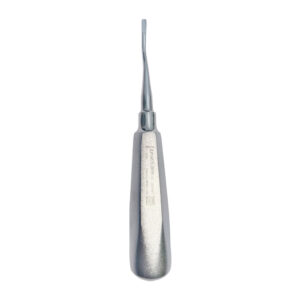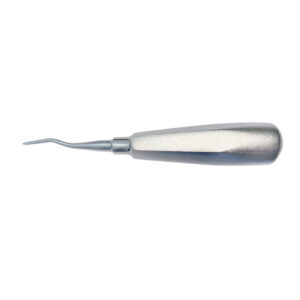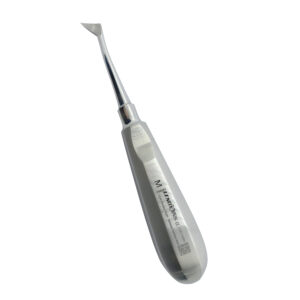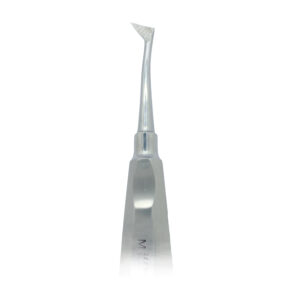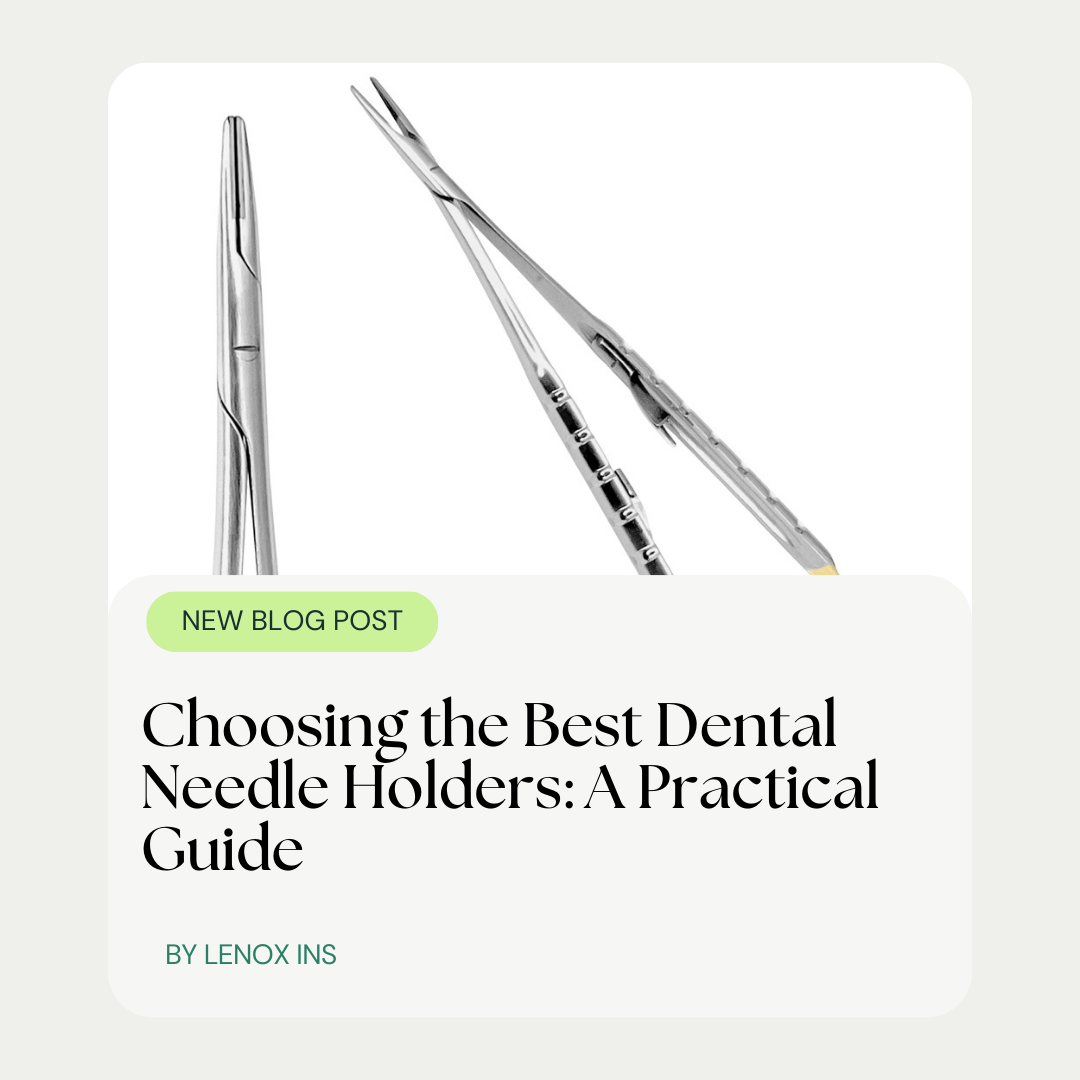Exploring Dental Needle Driver vs Hemostat: Which Is Best?
- Posted November 29, 2024
- by lenoxinstro
In the precise world of dentistry, selecting the right instrument can make a significant difference in patient outcomes. Whether you’re a seasoned professional or new to the field, understanding the nuanced functions of tools like the dental needle driver—a specialized type of pliers—and the versatile hemostat is crucial. This article will dissect the structural and functional distinctions between these two essential instruments, particularly in delicate procedures involving soft organ tissues and orthodontic applications. By comparing their unique features, you’ll learn to choose the most suitable tool for your dental procedures and understand how to care for them, thereby enhancing your clinical efficiency.
Understanding Dental Needle Drivers
The dental needle driver is a specialized instrument crucial in oral and maxillofacial surgery. This tool, defined by its precise grip and control, allows for the efficient suturing of soft tissues, effectively managing bleeding during procedures. The primary function of these drivers hinges on their design, incorporating features like the lever mechanism to chauffeur needles through delicate oral tissues without causing additional trauma. Dentists commonly rely on several types of needle drivers, each tailored to specific surgical needs, ensuring meticulous control during cauterization or when stemming blood flow. This introduction paves the way for a closer examination of their inherent features and their indispensable role in dental surgeries.
Defining the Needle Driver in Dentistry
The dental needle driver, often used in surgical applications, serves a precise purpose: to hold and manipulate needles when suturing tissue. Essential not only in dentistry but also in fields like plastic and orthopedic surgery, this instrument helps prevent injury to patients by providing a steady grip and reliable control. Its importance is highlighted in surgeries where the margins for error are small and the consequences for slips significant.
Incorporating a locking mechanism, commonly operated by the dentist’s finger, the needle driver ensures that the needle remains secure and steady during suturing. This is particularly crucial when working within the confined spaces of the oral cavity, where visibility and maneuverability are limited. By stabilizing the needle, the needle driver helps reduce the risk of inadvertent tissue damage, streamlining the surgical process and improving patient outcomes.
Exploring Dental Needle Driver vs Hemostat: Which Is Best?
-
Needle Holder, Fine Swedish Pattern, 15cm
Rated 0 out of 5CA$190Discover the Needle Holder, Fine Swedish Pattern, 15cm by Lenox Instruments, featuring tungsten carbide inserts for secure needle grip in delicate suturing procedures. -
Castro-Viejo Needle Holder Twist Joint, Curved 18cm TC – Precision Surgical Instrument
Rated 0 out of 5CA$190Discover the Castro-Viejo Needle Holder Twist Joint, Curved 18cm TC by Lenox Instruments. Designed for seamless suturing with advanced twist joint mechanism, tungsten carbide inserts, and ergonomic design. Trusted globally by surgical professionals. Shop now! -
Castro-Viejo Needle Holder Twist Joint, Curved 16cm TC – Precision Surgical Instrument
Rated 0 out of 5CA$190Discover the Castro-Viejo Needle Holder Twist Joint, Curved 16cm TC by Lenox Instruments. Designed for seamless suturing with advanced twist joint mechanism, tungsten carbide inserts, and ergonomic design. Trusted globally by surgical professionals. Shop now! -
Diethrich Micro Needle Holder 18cm CVD – Precision Surgical Instrument
Rated 0 out of 5CA$190Discover the Diethrich Micro Needle Holder 18cm CVD by Lenox Instruments. Designed for precise suturing with curved design, ergonomic handle, and superior durability. Trusted globally by surgical professionals. Shop now! -
Diethrich Micro Needle Holder 18cm STR – Precision Surgical Instrument
Rated 0 out of 5CA$190Discover the Diethrich Micro Needle Holder 18cm STR by Lenox Instruments. Designed for precise suturing with straight design, ergonomic handle, and superior durability. Trusted globally by surgical professionals. Shop now! -
Castroviejo Needle Holder 18cm CVD, Wide Handle Grip TC – Precision Surgical Instrument
Rated 0 out of 5CA$190Discover the Castroviejo Needle Holder 18cm CVD, Wide Handle Grip TC by Lenox Instruments. Designed for precise suturing with curved design, wide handle grip, and tungsten carbide inserts. Trusted globally by surgical professionals. Shop now! -
Castroviejo Needle Holder 18cm STR, Wide Handle Grip TC – Precision Surgical Instrument
Rated 0 out of 5CA$190Discover the Castroviejo Needle Holder 18cm STR, Wide Handle Grip TC by Lenox Instruments. Designed for precise suturing with straight design, wide handle grip, and tungsten carbide inserts. Trusted globally by surgical professionals. Shop now! -
Micro Needle Holder TC 18cm STR Locking – Precision Surgical Instrument
Rated 0 out of 5CA$190Discover the Micro Needle Holder TC 18cm STR Locking by Lenox Instruments. Designed for precise suturing with tungsten carbide inserts, locking mechanism, and ergonomic design. Trusted globally by surgical professionals. Shop now!
Primary Functions of Dental Needle Drivers
The primary function of a dental needle driver is to ensure the secure and precise placement of sutures during oral surgery. This surgical instrument operates on a lever mechanism that affords the dentist greater control as they guide the needle through soft tissues. Constructed typically from stainless steel, the driver’s design accounts for significant reduction in hand fatigue, which is paramount in lengthy procedures. The steel build also offers longevity and the ability to withstand the rigors of sterilization, underlining its utility in a sterile clinical environment.
In practice, the needle driver’s role extends to working cohesively with other tools such as curettes and trocars, aligning with the meticulous nature of dental surgeries. By providing a reliable grip, it minimizes the risk of a needle slipping and potentially harming the patient or disrupting the procedure. Its delicate yet firm hold on needles enables dentists to create precise sutures, thereby optimizing healing and reducing post-surgical complications.
Common Types of Needle Drivers Used by Dentists
Dentists utilize a variety of needle drivers, each designed to tackle specific challenges in oral surgery. Maylard or Crile-Wood needle drivers, for instance, are crafted for precision when sewing up wound edges, giving dentists the confidence to handle the needle with a precise and firm grip. This precision is essential when dealing with procedures near sensitive areas such as arteries or bone structures, ensuring the execution of sutures without unnecessary tissue trauma or complication.
Another commonly used type in dental practices is the Castroviejo needle driver, typically reserved for microsurgical procedures. This driver is distinct in its slim profile and delicate handling capability, which is particularly useful for intricate dental surgeries. By offering a refined control, this tool allows for exact suture placement in tight or challenging spaces, substantially diminishing the risk of accidental wound or artery perforation, an advantage mirrored in the precise cutting action of dental scissors.
Design Features Specific to Dental Needle Drivers
The design features of dental needle drivers are crucially tailored to facilitate precise suturing, essential in dental surgery and also beneficial in plastic surgery. Unlike hemostats which are designed for grasping and clamping to achieve hemostasis, needle drivers have tapered jaws that culminate in a fine tip, providing the dentist with the ability to place stitches accurately. The handles often include a ratchet mechanism that locks the jaws in place, reducing the hand fatigue clinicians might otherwise experience during extended procedures.
Furthermore, the ergonomic design of these needle drivers considers the well-being of both the patient and the dentist. With a focus on comfort, the handles are shaped to fit securely in the dentist’s hand, thus offering greater control and reducing slippage. This controlled environment not only aids in the prevention of accidental tissue damage but also improves the patient‘s experience by helping ensure a smoother and faster recovery post-surgery.
Role of Needle Drivers in Dental Surgical Procedures
In dental surgical procedures, the role of the needle driver proves to be substantially different from that of a hemostat. Surgeons utilize the needle driver for its specialized purpose of suturing, a task requiring precise control that other tools, like the hemostat, are not specifically designed to handle. Unlike hemostats, which may be employed for gripping and clamping, a stainless steel needle driver offers superior accuracy alongside the critical ratchet mechanism that accounts for an enduring and stable grip as the surgeon places each stitch post-incision.
Another key distinction seen in the needle driver vs hemostat comparison during oral surgeries is ergonomics. The design of the needle driver, often forged from stainless steel, is meticulously engineered to fit comfortably in the surgeon‘s hand, with a focus on permitting the thumb and fingers to operate it with minimal effort. This contrasts with the hemostat‘s functionality, which is primarily to assist in achieving hemostasis rather than the finesse required when maneuvering a scalpel or needle. Such precision aids in minimizing tissue trauma, crucial for patient recovery and surgical success.
Exploring Hemostats in Dental Practice
Moving from needle drivers, dentistry also requires effective tools for maintaining a clear surgical field, notably hemostats. A hemostat is essential in dental procedures for its ability to tightly grip and hold objects like a cannula or secure tissues, a role distinct from that of a needle holder. Utilized differently in oral surgery, hemostats come in various types, each with a jaw, ring, or another specific feature suited for its primary use. We’ll examine the range of dental hemostats, their design characteristics, and why they are indispensable in surgical settings. Their intricate design and vital role accentuate the need for understanding these instruments to achieve successful outcomes in dental surgeries.
What Is a Hemostat in Dentistry?
In the realm of dental practice, a hemostat is an essential instrument designed for clamping onto blood vessels or tissues, thus restricting blood flow and maintaining a clear view for the dentist during a procedure. Typically made from high-grade stainless steel to ensure durability and the ability to withstand repeated sterilization, hemostats have a locking mechanism that allows them to secure their grip without continuous pressure from the clinician. This particular functionality distinguishes them from syringes and other tools often used in both dental and general surgeries, emphasizing their specialized role in managing hemostasis. dental surgical hemostats
Hemostats serve a critical purpose beyond their capacity to just clamp blood vessels. In dental surgery, they adeptly assist in a variety of tasks that require a firm hold, such as gripping syringe needles during injections or securing small swabs used for sterilization purposes. While their appearance may be somewhat similar to other surgical tools, the precise design of hemostats is particularly optimized for tasks that demand their unique clamping capabilities, thereby ensuring efficient and safe surgical procedures within the dental field.
Primary Uses of Hemostats in Dental Procedures
Hemostats in dental procedures are vital for tasks where precision is key, such as stabilizing the tooth or controlling soft tissue to provide a clear operative field. Their beak-shaped tips and ratchet mechanism enable dentists to grasp and hold items securely, whether it’s during the extraction process utilizing an elevator or when maneuvering a retractor to maintain visibility. This clamping capability is essential for mitigating bleeding and providing an unobstructed view, crucial for the success of dental surgeries.
Furthermore, hemostats assist in the delicate handling of dental materials and tools, including sutures and implants, echoing their versatility beyond their traditional use. The beak of the hemostat, designed for precision, allows the clinician to position materials accurately, facilitating procedures and enhancing patient outcomes. With their ratchet locking system, hemostats ensure a consistent and dependable grip, reducing the chance for slip-ups and fostering efficiency during intricate dental operations.
Exploring Dental Needle Driver vs Hemostat: Which Is Best?
-
Titanium Alloy Mosquito Forceps 12.5cm Straight – Premium Surgical Instrument
Rated 0 out of 5CA$150Discover the Titanium Alloy Mosquito Forceps 12.5cm Straight by Lenox Instruments. Designed for precise clamping with lightweight titanium alloy, ergonomic design, and atraumatic functionality. Trusted globally by surgical professionals. Shop now! -
Smaha Elastomeric Ligature Placing Forceps 14cm Curved – Precision Orthodontic Instrument
Rated 0 out of 5CA$60Discover the Smaha Elastomeric Ligature Placing Forceps 14cm Curved by Lenox Instruments. Designed for precise ligature placement with superior durability, ergonomic design, and atraumatic functionality. Trusted globally by orthodontic professionals. Shop now! -
Smaha Elastomeric Ligature Placing Forceps 14cm Straight – Precision Orthodontic Instrument
Rated 0 out of 5CA$60Discover the Smaha Elastomeric Ligature Placing Forceps 14cm Straight by Lenox Instruments. Designed for precise ligature placement with superior durability, ergonomic design, and atraumatic functionality. Trusted globally by orthodontic professionals. Shop now! -
Splinter Forceps Straight – Precision Surgical Instrument
Rated 0 out of 5CA$50Discover the Splinter Forceps Straight by Lenox Instruments. Designed for precise splinter removal with superior durability, ergonomic design, and atraumatic functionality. Trusted globally by surgical professionals. Shop now! -
Splinter Forceps Curved – Precision Surgical Instrument
Rated 0 out of 5CA$50Discover the Splinter Forceps Curved by Lenox Instruments. Designed for precise splinter removal with superior durability, ergonomic design, and atraumatic functionality. Trusted globally by surgical professionals. Shop now! -
Foerster Dressing Forceps 20cm – Premium Surgical Instrument
Rated 0 out of 5CA$50Discover the Foerster Dressing Forceps 20cm by Lenox Instruments. Designed for precise handling of dressings and sponges with superior durability, ergonomic design, and atraumatic functionality. Trusted globally by surgical professionals. Shop now! -
Titanium Alloy Mosquito Forceps 12.5 Curved – Premium Dental Surgical Instrument
Rated 0 out of 5CA$150Discover the Titanium Alloy Mosquito Forceps 12.5 Curved by Lenox Instruments. Designed for precise clamping with lightweight titanium alloy, ergonomic design, and atraumatic functionality. Trusted globally by dental and surgical professionals. Shop now! -
Hartmann Baby Mosquito Forceps 9cm Straight – Precision Surgical Instrument
Rated 0 out of 5CA$40Discover the Hartmann Baby Mosquito Forceps 9cm Straight by Lenox Instruments. Designed for precise clamping with superior durability, ergonomic design, and atraumatic functionality. Trusted globally by surgical professionals. Shop now!
Different Types of Dental Hemostats
In the intricate realm of microsurgery and ophthalmology, hemostats designed for dental practice are equally pivotal. These sophisticated tools come in variants like the mosquito hemostat, which, with its slender form and fine tips, is particularly suited for grasping delicate tissues during microsurgical procedures. Tungsten carbide inserts in the jaws provide the durability needed for repetitive tasks, such as manipulating minute blood vessels or sutures, ensuring precise control and minimal tissue damage.
Meanwhile, the Kelly hemostat is frequently employed during dental extractions, where a strong, secure grip on tissues and dental materials is a necessity. Its slightly curved jaws allow for an enhanced range and the ability to clamp onto denser tissues, proving invaluable when a clinician must navigate the complexity of oral anatomy. This variety of hemostats underscores their adaptability and importance, enabling dentists to respond adeptly to the diverse challenges presented in a dental surgical setting.
Design Characteristics of Hemostats
Hemostats crafted from robust metal such as stainless steel or those with tungsten carbide inserts feature prominently in surgeries ranging from dental procedures to eye surgery, providing the resilience and durability necessary for repeated use. These design characteristics are crucial as hemostats must maintain a firm grip, often on slippery tissues or during the precise placement of a surgical suture, ensuring a reliable performance in varied and demanding clinical situations.
In complex procedures such as a hysterectomy, the unique design of hemostats – with their locking mechanism and serrated jaws – becomes indispensable. This design is engineered to hold tissues securely without constant pressure from the surgeon‘s hand, which translates directly to patient safety and procedural efficiency. The fine control afforded by hemostats exemplifies their role as a foundational tool in surgical practice, demonstrating their utility beyond the conventional use of manipulating blood vessels.
Importance of Hemostats in Oral Surgery
In the precise arena of oral surgery, hemostats reign as a critical tool for controlling bleeding, a common challenge that can obstruct the surgical field. By clamping onto blood vessels, hemostats facilitate a clearer view for the dentist, enabling more accurate work during intricate procedures. Their importance cannot be overstated; ensuring visibility not only improves the accuracy of the surgery but also significantly enhances patient safety and outcomes.
Furthermore, the hemostat proves to be indispensable in oral surgery for its multifunctional use in gripping and holding various materials securely in place. Whether stabilizing a tooth during extraction or manipulating grafts and membranes, the accuracy and dependability of hemostats streamline the surgical process. This tool‘s ability to maintain a firm hold without continuous manual pressure is instrumental in improving the efficiency and effectiveness of oral surgical treatments.
Comparing Structural Features
In the nuanced sphere of dental instruments, discerning the distinctions between needle drivers and hemostats is vital for precision in practice. This section delves into their physical differences, pinpointing the diverse gripping mechanisms and tips, the robust materials used for construction, and the ergonomic considerations crucial for dental professionals. The interplay between design and functionality epitomizes the thoughtfulness invested in these tools, sculpting their roles in surgical success. Each subsequent topic will unpack these features, amplifying the understanding necessary for informed utilization in dental environments.
Physical Differences Between Needle Drivers and Hemostats
The functional design of a dental needle driver is distinctly different from that of a hemostat. The needle driver is specifically engineered with narrow, tapered jaws to ensure high precision when passing sutures through soft tissue. Unlike the hemostat, whose broader, serrated jaws are designed for clamping and holding, the needle driver includes a textured surface to maintain a firm grasp on the needle without slippage, paramount during the meticulous work of suturing.
In addition, the locking mechanisms between the two instruments differ significantly. Needle drivers are equipped with a finely constructed ratchet that allows for delicate control over the needle, critical for the success of surgical suturing. Meanwhile, hemostats possess a more robust locking system, designed to maintain a secure hold on tissue or vessels, even when significant force is applied. This difference in the locking feature is crucial, reflecting the divergent functions each tool serves within the dental surgical suite.
Gripping Mechanisms and Tips
The gripping mechanisms of dental needle drivers and hemostats serve distinct purposes. Dental needle drivers are specifically designed with a narrow, serrated grip to hold the needle firmly during suturing, ensuring a smooth passage through soft tissues. This contrasts with the broader tips of hemostats that provide a firmer hold on larger tissues or blood vessels, crucial during procedures to maintain a clear surgical field.
In terms of tips, needle drivers typically feature a finely pointed tip allowing for meticulous suture placement, necessary for delicate dental surgeries. Hemostats, however, come with varied tip designs like straight, curved, or even blunted ends to facilitate the clamping of different structures within the oral cavity. This design consideration ensures dental professionals can confidently manage tissue with precision, catering to the specific needs of each surgical procedure.
Materials Used in Construction
The materials used in constructing dental needle drivers and hemostats are chosen for their durability and capacity to withstand the rigors of frequent sterilization. Stainless steel, known for its corrosion resistance and strength, is the standard material for these surgical instruments, guaranteeing their longevity and reliability in a clinical setting. The choice of material also affects the tool‘s weight and balance, aspects crucial for providing dental professionals with the necessary precision during procedures.
In certain high-performance models, tungsten carbide inserts are integrated into the jaws of both needle drivers and hemostats. These inserts significantly enhance the instrument’s gripping power and cutting edge retention, making them exceptionally well-suited for repetitive tasks like suturing or clamping onto tough oral tissues. The introduction of tungsten carbide has been transformative, allowing dental instruments to retain their function over an extended period while reducing the need for frequent replacement.
Ergonomic Considerations for Dental Professionals
Ergonomic considerations are paramount when selecting surgical instruments like dental needle drivers and hemostats, as they directly influence the practitioner’s comfort and the procedure’s success. A well-designed tool reduces the risk of repetitive strain injuries and enhances control during surgical tasks, thus enabling dental professionals to operate more effectively over long periods. Tools with thoughtfully contoured grips and balanced weight distribution are favored, as they tend to align closely with the natural movements of the hands, reducing fatigue and increasing precision during delicate surgeries.
Instruments such as needle drivers and hemostats that boast ergonomic features also support better patient outcomes. Dental professionals can maintain steadier hands and finer control over their tools, which is critical when navigating the intricacies of oral surgery. Optimal design mitigates involuntary movements or slippage, thus minimizing the potential for tissue trauma and aiding in a smoother recovery. By focusing on ergonomic design in their surgical tools, dentists can ensure a higher degree of accuracy and patient comfort during and after the procedure.
Influence of Design on Functionality
The interplay between design and functionality in dental needle drivers and hemostats cannot be overstated, as each feature fulfills a critical role in enhancing surgical precision and efficiency. For example, the tapered jaws of a needle driver facilitate precise suture placement in soft tissue, a task that bulkier hemostat tips are not suited for. The consideration of such design aspects ensures that dentists have the right tool for specific tasks, streamlining workflows and improving patient care.
Moreover, the integration of ergonomic handles and balanced weight distribution greatly influences functionality by reducing hand fatigue and increasing control during surgical procedures. This meticulous attention to design allows dental professionals to maintain focused precision over lengthy surgeries, thus minimizing the risk of errors and enhancing the overall outcome for the patient. It is evident that thoughtful design greatly amplifies the effectiveness of these specialized tools within the dental surgery environment.
Functional Differences in Clinical Use
In the detailed arena of oral surgery, understanding the functional differences between dental needle drivers and hemostats is crucial. Suturing techniques with needle drivers require precision and finesse, while tissue handling and clamping with hemostats demand secure and firm manipulation. Each instrument affects procedure outcomes and choosing the right one for specific tasks is essential. This subsection explores the significance of precision and control across different procedures, guiding clinicians on the appropriate instrument selection to enhance surgical success.
Suturing Techniques With Needle Drivers
When discussing suturing techniques with needle drivers, dental professionals emphasize precision and ease of use. The dental needle driver’s design allows for a fine grip and controlled maneuvering of the needle, crucial for executing intricate sutures in soft oral tissues. Efficient suturing requires a tool that minimizes tissue displacement and allows for the careful placement of stitches to promote optimal healing outcomes.
In complex dental surgeries, the reliability of a needle driver in handling various suture materials stands out. Its tapered jaws and locking mechanism contribute to the precision and stability needed when applying sutures in areas of limited access. Dentists benefit from the needle driver’s design, ensuring that each stitch is placed with the utmost accuracy, which is integral for patient comfort and the minimization of post-surgical complications.
Tissue Handling and Clamping With Hemostats
In the context of oral surgery, hemostats play a pivotal role in tissue handling and clamping, unlike the more suture-oriented needle driver. They provide a robust clamping action that secures tissues and vessels, imperative for maintaining hemostasis and a clear surgical field. Dentists rely on hemostats to manage soft tissue with precision, ensuring that procedures like tooth extractions and periodontal surgeries are completed with minimal bleeding and obstruction.
The practical utility of hemostats extends beyond merely gripping; they’re instrumental in retracting tissues and nerves away from the surgical site. This versatile tool affords surgeons the confidence to perform delicate dental maneuvers without the worry of tissue slippage. The assured grip and control granted by hemostats make them a cornerstone in dental practices, epitomized through their steadfast presence in an array of oral surgical procedures.
Precision and Control in Different Procedures
In endodontic procedures where meticulous canal shaping is paramount, the needle driver’s precision is unmatched. Its finely honed tip and secure grip allow dental professionals to maneuver sutures with incredible accuracy, essential for maintaining the integrity of the root structure. Dental surgeons benefit from its precise control which significantly reduces the risk of perforation, a crucial factor for successful endodontic therapy.
Conversely, during periodontal surgeries, the hemostat‘s robust clamping ability comes to the fore, offering unparalleled control over bleeding sites. Its sturdy construction and locking mechanism empower dentists to swiftly isolate and address areas of concern, enabling better visualization and treatment of the periodontal pocket. This level of control is instrumental in enhancing the efficacy of the procedure and subsequently, the patient‘s healing process.
Choosing the Appropriate Instrument for Specific Tasks
Selecting the appropriate instrument for specific tasks is fundamental in dental surgery to optimize outcomes and patient comfort. A dental needle driver is indispensable for suturing, offering unmatched precision when affixing stitches in delicate mucosal tissues, whereas hemostats are crucial for their strong clamping ability, ideal for managing tissue and controlling bleeding during tooth extractions. A surgeon‘s choice between these tools can profoundly influence the efficiency of the procedure and the healing process post-operatively.
Dental professionals must assess the surgical situation to determine whether the fine control of a needle driver or the robust grip of a hemostat is required. In scenarios demanding intricate suturing, the needle driver is the go-to instrument, enabling precise manipulation of suture materials. Conversely, in surgeries where staunching blood flow is the priority, hemostats are unrivaled in their capacity to grasp and secure tissues, aiding in maintaining a clear operative field critical for successful dental interventions.
Impact on Procedure Outcomes
The precise use of a dental needle driver or a hemostat can profoundly impact the outcomes of surgical procedures, enhancing patient recovery and reducing the risk of complications. A dental professional’s adept suturing with a needle driver supports optimal tissue healing, while the effective use of a hemostat to manage hemostasis can lead to a clearer surgical field and less postoperative discomfort. These outcomes underline the importance of mastering both instruments, as they each contribute uniquely to the overall success of dental surgeries.
Clinical results also hinge on the proper instrument selection for specific tasks within dental procedures. For example, the choice of a needle driver for delicate suturing tasks, such as closing incisions after dental implants, allows for precise stitching, minimizing scar tissue formation. In contrast, utilizing a hemostat to securely clamp blood vessels can prevent excessive bleeding, supporting a smoother, more rapid recovery process. This tailored approach ensures that each phase of surgery is conducted with the appropriate tool, leading to more predictable and satisfactory results for patients.
Selecting the Right Instrument for Dental Procedures
Choosing the optimal instrument for dental procedures is a decisive factor in achieving clinical excellence. Dentists must carefully assess procedure requirements and consider various factors that influence instrument choice to ensure the most beneficial outcomes. Employing specialized tools like needle drivers and hemostats can markedly enhance efficiency and patient care. This section scrutinizes the impact of using the correct dental instrument through case examples and explores how strategic selection contributes to procedure success and patient satisfaction.
Assessing Procedure Requirements
When determining the necessary tools for dental procedures, careful consideration of the procedure’s specific needs is paramount for clinicians. The complexity and location of the surgical site often dictate whether the fine control offered by a dental needle driver or the secure clamping provided by a hemostat is required. Dentists evaluate the tissue type, the anticipated difficulty of suturing, and the potential for bleeding to decide which instrument will afford the highest level of precision and safety.
Furthermore, the selection process involves understanding the unique capabilities of each instrument, as needle drivers are optimized for suturing with their narrow jaws and locking mechanisms, whereas hemostats excel in gripping and holding tissues. Accurate assessment leads to informed decisions, ensuring that clinicians are equipped with the right tools to handle delicate dental tissues during procedures like implant placements or bone grafting effectively.
Factors Influencing Instrument Choice
In dentistry, the choice between a needle driver and a hemostat hinges on factors like the surgical procedure’s specificity and the dentist’s personal technique. Precision tasks like suturing require the fine grip of needle drivers for accurate stitch placement, which aids in reducing tissue trauma and enhancing healing. Conversely, surgeries entailing significant tissue manipulation or where maintaining hemostasis is paramount necessitate the firm, ratcheted grip provided by hemostats, underscoring the importance of selecting the right instrument for the task at hand.
Further influencing instrument choice are ergonomics and material durability, as these aspects impact a dentist’s performance over prolonged surgeries. A needle driver designed with an ergonomic grip and constructed with durable materials like tungsten carbide can preserve function and reduce hand fatigue. Meanwhile, robust hemostats equipped with specialized jaws effectively clamp onto tissues, streamlining procedures like extractions where a clear view of the surgical site is key, ultimately contributing to successful patient outcomes and satisfaction.
Latest Collection
-
Needle Holder, Fine Swedish Pattern, 15cm
Rated 0 out of 5CA$190Discover the Needle Holder, Fine Swedish Pattern, 15cm by Lenox Instruments, featuring tungsten carbide inserts for secure needle grip in delicate suturing procedures. -
Bone Condenser Spoon
Rated 0 out of 5CA$50Discover the Bone Condenser Spoon by Lenox Instruments, a dual-ended surgical tool for transferring and compacting bone graft material. Ideal for sinus lifts, ridge augmentation, and implant site preparation. -
Box of 10sets- Single Ended Cheek Retractors Plastic (Set of 2) Reusable
Rated 0 out of 5CA$150Discover the Single Ended Cheek Retractors Plastic (Set of 2) by Lenox Instruments, designed for optimal visibility and patient comfort during dental procedures. -
Single Ended Cheek Retractors Plastic (Set of 2) Reusable
Rated 0 out of 5CA$20Discover the Single Ended Cheek Retractors Plastic (Set of 2) by Lenox Instruments, designed for optimal visibility and patient comfort during dental procedures. -
Periosteal 24G – Precision Surgical Instrument
Rated 0 out of 5CA$50Discover the Periosteal 24G by Lenox Instruments, a professional surgical instrument designed for reflecting and retracting mucoperiosteal tissue during dental procedures. Trusted by professionals in Canada, USA, UK, Australia, and Europe. -
E93 Elevator – Dental Extraction Instrument
Rated 0 out of 5CA$50Discover the E93 Elevator by Lenox Instruments, a professional dental instrument designed for effective loosening of teeth during extractions. Trusted by professionals in Canada, USA, UK, Australia, and Europe. -
Medium Cryer Elevator Right
Rated 0 out of 5CA$50Discover the Medium Cryer Elevator Right by Lenox Instruments, a professional dental instrument designed for effective loosening of teeth during extractions. Trusted by professionals in Canada, USA, UK, Australia, and Europe. -
Extra Small Cryer Elevator Right
Rated 0 out of 5CA$50Discover the Extra Small Cryer Elevator Right by Lenox Instruments, a professional dental instrument designed for effective loosening of teeth during extractions. Trusted by professionals in Canada, USA, UK, Australia, and Europe.
Benefits of Using Specialized Tools
Employing specialized dental instruments like needle drivers and hemostats greatly improves the precision and efficiency of dental surgeries. A needle driver’s design, tailored for accurate suture placement, significantly mitigates tissue trauma, promoting faster healing. In contrast, the robust grip strength of hemostats allows dentists to maintain clear surgical fields and manage bleeding effectively, facilitating a smoother procedure.
The advantages of using specialized tools extend beyond functionality to include improved patient experiences. A dentists’ use of a needle driver reflects a commitment to patient comfort during soft tissue suturing, reducing postoperative discomfort. Similarly, the assured clamping action of hemostats enables quicker interventions, leading to reduced chair time and enhanced overall patient satisfaction with the dental care provided.
Case Examples of Instrument Selection
In a complex procedure like a dental implant placement, the selection between a needle driver and a hemostat could mean the difference in surgical precision. A dentist might choose a needle driver during the delicate process of suturing the gum tissue after implant placement, capitalizing on the tool‘s ability to place fine, accurate stitches that promote better healing and reduce the risk of infection. The dentist’s choice is guided by the instrument’s precise control over the suture needle, ensuring that each stitch contributes to the procedure’s success and patient recovery.
Conversely, during the extraction of an impacted wisdom tooth, a hemostat may be the dentist’s instrument of choice, due to its robust clamping action necessary for managing soft tissue and aiding in the removal process. The secure and reliable grip of a hemostat assists in controlling bleeding, providing a clear view of the surgical area, and reducing the procedure’s duration. This strategic selection allows the dental professional to perform the extraction with greater efficiency and patient comfort, highlighting the importance of utilizing the appropriate tool for specific dental surgeries.
Enhancing Efficiency and Patient Care
Choosing the appropriate dental instrument not only streamlines the procedure but also significantly contributes to patient care. When dentists utilize a needle driver effectively, they can place sutures with precision, leading to less tissue damage and a more comfortable healing process for the patient. On the other hand, skillful application of a hemostat provides a secure hold on tissues, facilitating a clearer surgical field and fewer complications, thereby improving the patient experience.
The efficiency of dental procedures is greatly influenced by the correct selection of tools, enhancing both clinician performance and patient satisfaction. By opting for a hemostat when managing blood flow or a needle driver for delicate suturing, dentists can execute surgical tasks with increased accuracy and speed. These choices directly impact the success of the treatment and minimizes the patient‘s time in the dental chair, resonating with patient-centric care that prioritizes comfort and outcomes.
Care and Maintenance of Dental Instruments
To ensure the durability and efficacy of dental needle drivers and hemostats, understanding the principles of proper care and maintenance is imperative. The forthcoming topics will delve into the nuances of cleaning techniques specific to needle drivers, strategies for prolonging the lifespan of hemostats, adherence to dental sterilization protocols, timely recognition of instrument wear, and best practices for preserving these essential surgical tools. Addressing these areas is essential for maintaining a high standard of patient care and optimizing the functionality of dental instruments within clinical settings.
Proper Cleaning Techniques for Needle Drivers
To maintain the precision and hygiene of dental needle drivers, it’s crucial to adhere to thorough cleaning techniques after each use. Professionals should promptly remove biological debris by rinsing the instrument under running water, followed by gentle brushing with a soft-bristled brush and a compatible detergent. This action prevents the accumulation of residues that can interfere with the needle driver’s intricate mechanisms, ensuring it remains reliable for each procedure.
After manual cleaning, needle drivers require autoclaving to achieve complete sterilization, a process that must be conducted according to the manufacturer’s instructions to safeguard the instrument’s integrity. It’s imperative to dry the needle drivers carefully before sterilization to avert corrosion and prolong their usable life, recognizing that meticulous post-procedure care underpins the efficacy and longevity of these essential surgical tools.
Maintaining Hemostats for Longevity
The sustained usefulness of hemostats in dental practice hinges on diligent care and regular maintenance. Dentists ensure the longevity of these vital instruments by meticulously cleaning them post-use, carefully removing tissue remnants and blood, which can cause corrosion over time. Hemostats perform best when they are subjected to a strict sterilization routine, using methods appropriate for their stainless steel construction, thus safeguarding their precision and clamping efficiency.
Preserving hemostats also involves regular inspections for signs of wear, such as misalignment or dullness in the clamping area, which could compromise their gripping ability. Proactive maintenance, including prompt repair or replacement of worn components, is essential in preventing malfunctions during dental procedures. By prioritizing the care of hemostats, dentists protect their investment in high-quality surgical tools and maintain a standard of excellence in patient care.
Sterilization Protocols in Dental Settings
Sterilization protocols in dental settings serve as a bulwark against cross-contamination and infection, ensuring that instruments like needle drivers and hemostats remain sterile between procedures. Rigorously following these protocols involves cleaning and autoclaving tools at a temperature and pressure designed to eliminate all microbial life. This process is crucial for patient safety and the integrity of instruments, as even the most minor breach in sterilization technique can have serious repercussions.
Dentists and surgical teams adhere to these protocols by meticulously tracking the sterilization cycle of each instrument, using indicators and integrators to verify that the autoclaving process is effective. They understand that the longevity of devices such as dental needle drivers and hemostats depends on proper sterilization, which safeguards the tools’ precision and functionality. By prioritizing these procedures, dental professionals demonstrate their commitment to delivering the highest standard of care to their patients.
Identifying Wear and When to Replace Instruments
Regular inspection of dental needle drivers and hemostats is key to identifying wear that can compromise their performance during surgeries. Clinicians should look for signs such as weakened grip, misaligned jaws, or corrosion, indicators that instruments may no longer function with the necessary precision. Once these telltale signs become apparent, replacement becomes imperative to maintain the high standards of dental practice and ensure patient safety.
Dentists must consider the frequency of use and the quality of instruments when determining their lifespan. A dental needle driver or hemostat subject to daily use in a busy practice will exhibit wear sooner than those used less frequently. Thorough inspection after each sterilization cycle helps spot potential issues, such as dulled edges or stiff hinges, signaling it’s time for the instrument to be professionally serviced or replaced to uphold the efficacy of dental procedures.
Best Practices for Instrument Preservation
Proper instrument preservation is essential for dentists to maintain the quality and functionality of needle drivers and hemostats. To prevent instrument degradation, dentists are advised to store these tools in a dry and controlled environment away from direct sunlight, which could degrade the materials over time. Additionally, applying a thin layer of a surgical instrument lubricant after cleaning can facilitate smooth operation and prevent rust formation, extending the lifespan of these precision tools.
Adequate storage solutions, such as protective cases or holders with individual slots, safeguard needle drivers and hemostats from accidental damage that could affect their alignment and effectiveness. Dental professionals ensure that these specialized instruments are separated from general dental implements to mitigate the risk of cross-contamination. By adhering to these best practices in instrument preservation, dental practitioners can guarantee a dependable performance of their surgical instruments, consistently delivering high-quality patient care.
Conclusion
In the precise field of dental surgery, the choice between using a needle driver or a hemostat is pivotal for clinical success, dictating suture accuracy and bleeding control. Needle drivers are indispensable for their suturing finesse, while hemostats offer unmatched strength in tissue management, reflecting the necessity of strategic tool selection. Proper care and maintenance of these instruments not only ensures their longevity but also safeguards patient outcomes and procedural efficiency. The discerning use of dental needle drivers and hemostats ultimately epitomizes a dedication to excellence in patient care and surgical precision.


